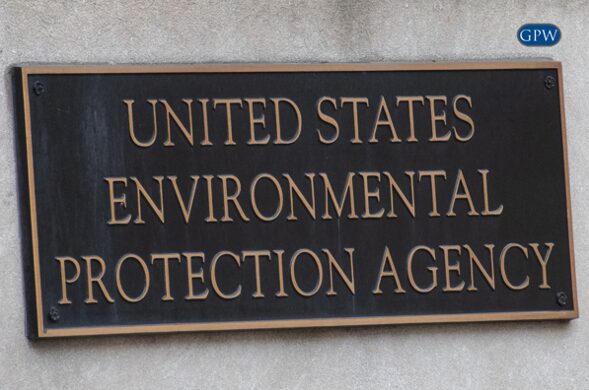Top 5 Occupations at Risk for Asbestos Exposure
One of the most common forms of asbestos exposure is occupational, rather than environmental. Its durability, affordability, and fire-resistant qualities made it a “jack-of-all-trades” material that could be used in many lines of work. Certain occupations were more at risk than others during the rise of the asbestos industry in the early to mid-twentieth century. The following are the top five high risk positions for asbestos exposure:
Railroad worker
Asbestos was used throughout much of the railroad industry, especially when railroad travel became a popular mode of transportation. Asbestos was used for insulation on steam and diesel locomotives, steam generators, pipe covering, cabooses, gaskets, electrical panels, boiler insulation, and much more. According to the American Journal of Industrial Medicine, railroad workers who typically worked on repairing steam locomotives had the most exposure and many diesel engines had steam generators that were covered with asbestos.
Shipbuilders
Shipbuilders who worked in shipyards were exposed to asbestos for decades before asbestos came under severe regulation. As WWII progressed, military ships and vessels were in high demand, resulting in an upturn of asbestos products used throughout construction and repair of the ships. Asbestos was used in boilers, wall insulation, pipe covering, gaskets, pumps, and steam pipes. A study looking into the mortality of shipyard workers noted that mesothelioma and respiratory cancer was much more apparent in the men and women who built the vessels. Occupational health experts recognized the health hazard among the shipyards as early as the 1940s, but society and the government did not warn until the 1960s and 1970s, when the threat of asbestos was taken more seriously due to the an alarming high death rate among those who worked in shipyards during that time period.
Factory Worker
A factory worker is a blanket term used to describe any sort of laborer who works in a factory, including steel mills. The job of a factory worker encompasses many responsibilities – from machine operation to line production. Factories today are a much safer place to work, but decades ago, work in a factory was hazardous. Poor ventilation, small cramped spaces, and low lighting caused many work place injuries.
Asbestos containing products that were manufactured in factories was an obvious hazard, but the health risks related to asbestos exposure were not just from the manufacturing of those products. Due to the friction that could cause a factory fire, asbestos was used in conveyor belts, grinding wheels, transportation belts, and belt drives. Overtime those belts can break down, causing asbestos fibers to become airborne. Machine equipment that began replacing humans for factory work often contained asbestos insulation. If those machines broke down, then asbestos fibers would be released into the air. Asbestos containing products that were frequently used include: pipe covering for steam lines and hot water lines, block insulation, cement, gaskets, packing, valves, pumps, blankets, gloves, blankets, and clothing. Factory workers could be exposed by simply walking through a manufacturing area, having an office near the products, or interacting with a worker who had asbestos on his/her clothing.
Construction Worker
Asbestos was a popular building material used throughout the 20th century because it was inexpensive and because of its fire-proof qualities. Construction workers were constantly working with the carcinogen through the installation of ceiling tiles, drywall, flooring, insulation, and roofing. While asbestos is not used as readily anymore, it still lingers in many of today’s buildings, causing a potential threat of exposure should those asbestos fibers break down and become airborne. Demolition workers have the highest risk of exposure as asbestos dust becomes airborne once buildings are torn down. Drywall workers, boilermakers, electricians, pipefitters, bricklayers, roofers, and painters are typically at a higher risk of asbestos exposure.
Miners
Asbestos is actually the generic name given and is not a mineralogical definition. A mineral product that is flexible, possesses high tensile strength, is heat resistant, resistant to chemical degradation, and can be woven into fabric is commercially designated as “asbestos.” Those who mine asbestos are clearly at more risk than those who do not; however, asbestos has been found in areas where coal and vermiculite is mined. Fifteen percent of coal mines in the United States are considered to be contaminated with asbestos. The process of handling coal (crushing, grinding, cutting, etc), releases dust into the air which puts coal miners at high risk of asbestos exposure if the coal is tainted.
The Libby vermiculite mines were a source of great pride and income for the residents of Libby, Montana as close to 80% of the world’s supply of vermiculite was mined there. Unfortunately, much of the vermiculite mined in Libby contained asbestos and contributed to over 400 people dying in the small community from asbestos-related illnesses. Asbestos- related diseases and cancers do not just affect those who work in the mine; many who live around the mines are in danger of airborne particles. In the case of Libby, Montana, soil samples from parks, baseball fields, and other communal areas were found to be heavily contaminated with asbestos from the vermiculite mines. Contractors, refinery workers, and miners all have the potential to be exposed not just through mining the mineral itself, but through much of the equipment used in the mines as the equipment contained asbestos. Basic handling and repair of the equipment used could cause asbestos fibers to become airborne.
While asbestos is heavily regulated in the United States, it is not illegal, so occupational exposure is still a threat. The Occupational Safety and Health Administration (OSHA) is supposed to protect and assure laborers that they are working in a safe and healthy environment. As an employee, know that you have rights under OSHA. If you think your workplace is hazardous, you have the right to contact OSHA and ask them to inspect your environment. At Goldberg, Persky & White, P.C. (GPW) we do not tolerate work place violations. If you are suffering from a life-threatening illness that may have been caused by asbestos exposure, contact the attorneys at GPW for a free, no obligation consultation.
Sources:
Lawrence Reaves, “Top 5 Most Common Jobs With Asbestos Exposure,” Cancer Survival (October 3, 2012). [Link]
Garshick E, Schenker MB, Woskie SR, Speizer FE, “Past Exposure To Asbestos Among Active Railroad Workers,” American Journal of Industrial Medicine (1987). [Link]
Willard J. Moody, Jr., “Asbestos Disease Among Railroad Workers,” [Link]
William S. Beckett, “Shipyard Workers and Asbestos: A Persistent and International Problem,” Occupational Environmental Medicine (October 2007).[Link]
Mesothelioma Applied Research Foundation, “Asbestos Exposure Among Factory Workers” [Link]
Rupert Shepherd B. Sc, “Construction Workers and Electricians At High Risk of Asbestos Exposure,” Medical News Today (November 25, 2011). [Link]
Kristina Luus, “Asbestos: Mining Exposure, Health Effects and Policy Implications,” McGill Journal of Medicine (July 2007). [Link]



